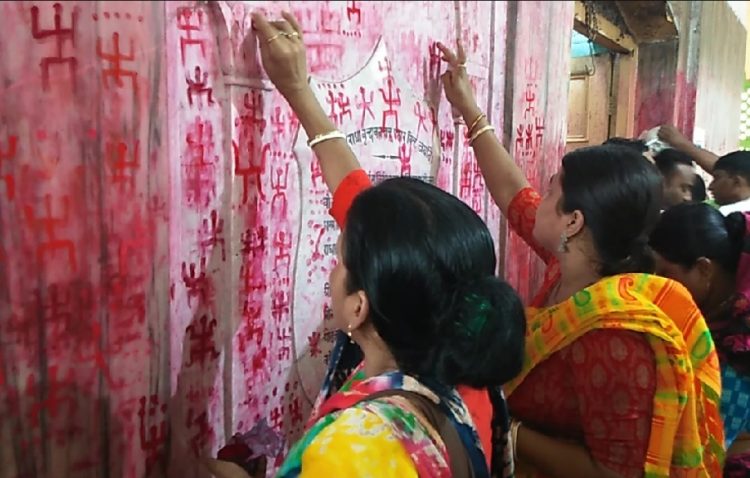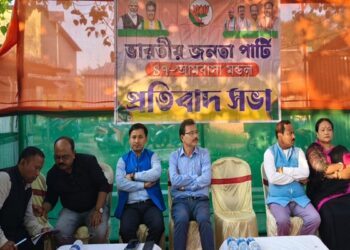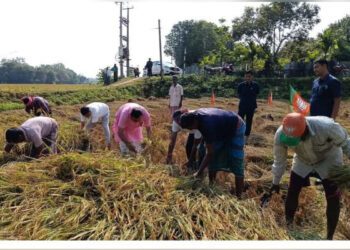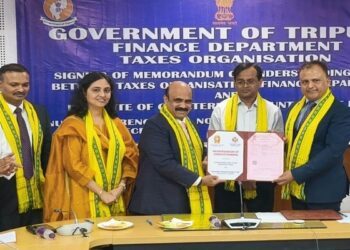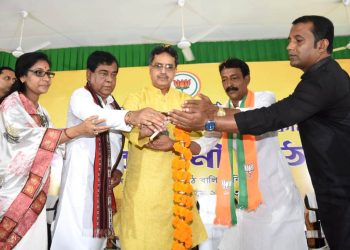Hundreds of Hindu Bengali throng temples for offering prayers on the occasion of Poila Boishakh, the first day of the Bangla calendar.
This year is 1430 according to Bengali Sakabdi and the first day of the year is considered the most auspicious day in the Bengali calendar, as it is believed the Hindu Creator God Lord Brahma started creation on this day.
On the Bengali New Year, homes are cleaned and decorated to welcome the Goddess Lakshmi and God Ganesha.
People wearing new dress went to temples to pray and get blessings. The young seek the blessings of their elders, as in all Indian homes.
Women put vermilion on each other’s forehead wishing a long and happy life. They also draw auspicious signs with vermilion of temple walls for better family life.
Shopkeepers start the day worshiping Laxmi-Narayan and Ganesha for a prosperous year ahead.
Hindu priest draw a Swastik symbol with vermilion in trader’s ‘Hal Khata'(Accounts Book) on this day as a belief to bring good fortune in business as friends and relatives wish each other a happy new year.
Poila Boishakh is also known as Nôbobôrsho, as it is the first day of the first month of Boishakh in the Bengali calendar.
This is a very festive time for Bengalis. Other than Tripura, Poila Boishakh is also celebrated in a festive manner in both Bangladesh and West Bengal. Hence, Poila Boishakh connects all ethnic Bengalis irrespective of religious and regional differences.
It falls on April 14 or 15 of the Gregorian calendar depending on the use of the new amended or the old Bangla calendar respectively.
On this day the Assamese celebrate Bihu, Sikh community is also celebrating their harvest festival Vaisakhi, and the Malayalees celebrating Vishu, which is their New Year and harvest festival.


